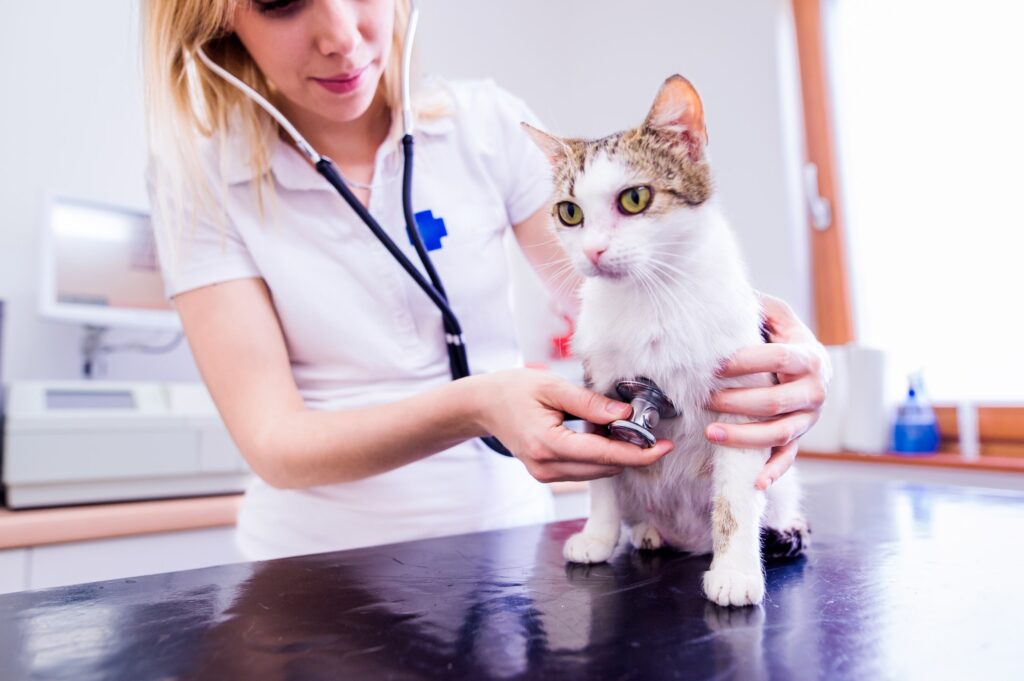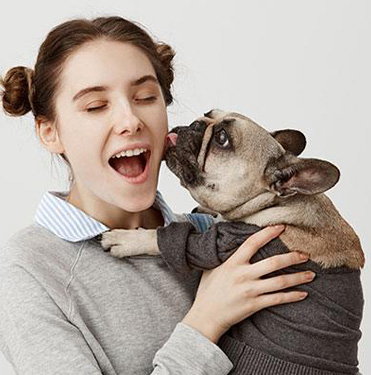Having a pet is a wonderful experience. Over the years, we grow to love our pets and consider them part of the family.
When they reach an advanced age, you will face the reality of losing your cat or dog soon, which can be overwhelming.
While the end of life is never a pleasant topic, it’s important to prepare for the impending separation, especially if your pet has begun to show signs of a poor quality of life.
While you may never be completely ready to say goodbye to your pet, you need to take the necessary steps to make his or her remaining days as comfortable and dignified as possible. Here are some tips and information for end-of-life care for pets.
Red flags that indicate poor quality of life.
Each pet has specific needs that need to be identified. Quality of life is one way pet owners can define the overall physical and mental health of their cat or dog.
There are certain signs that may indicate your senior pet’s quality of life is declining, including
- Your pet doesn’t want to play
- Your pet hides
- Your pet no longer interacts with others as much as he or she used to
- Your pet doesn’t eat and/or drink well
- Your pet has more bad days than good days
- Your pet seems to be in pain
- Your pet doesn’t like the activities it used to do
- Your pet is no longer active and spends a lot of time sleeping
While many of these signs are a natural progression due to the aging process, certain conditions can also cause your pet’s life to deteriorate. Some common chronic health conditions in older dogs include cancer, blindness, deafness, chronic kidney disease, osteoarthritis and overweight/obesity.
Signs that your pet may be nearing the end of life.
While we all want our pets to live forever, sometimes your pet may be nearing the end of its life. It is important to know the signs that your pet may be dying so that you can make him as comfortable as possible or make the decision to euthanize him.
Some common signs that your pet may be nearing the end of his or her life include
- Extreme weight loss
- Fatigue
- Poor coordination
- Incontinence
- Confusion
- Decreased mobility
- Behavioral changes
- Poor response to treatment
- Dehydration/refusal to eat/drink
- Unusual taste
- Dull eyes
- Poor temperature regulation
- Lack of interest
- Abnormal breathing
- Seizures
In some cases, certain signs may indicate that your pet has developed a treatable health condition. If your pet shows abnormal signs or symptoms, be sure to consult your veterinarian to determine if treatment is possible.
What does end-of-life care for pets mean, specifically?
Saving your pet’s life is more important than temporarily conforming to their feelings until the condition can be determined. Not willing to eat, then force-feed. If it does not want to go to the hospital, then take it by force. But once the hope of misdiagnosis has dissipated, I think the direction of treatment should probably be changed to trying to prolong the pet’s life and improve the quality of life.
The same applies when placed here. The purpose of hospice care for pets is, at the time when they have to say goodbye, ease their suffering, and enhance their psychological and spiritual state.
3 Principles for end-of-life care for pets
Principle 1: Understanding the disease process
There is no right or wrong personal choice, but it is best to base it on full knowledge of the disease. What owners can do at that time is to make the best choices for their pets based on their own knowledge and understanding of the full extent of the situation.
During end-of-life care, pet owners’ goals and priorities may shift as the disease progresses. Once they understand the disease process, perspectives may change.
Owners of pets with no hope of treatment should try to accommodate them if they are willing to eat. If hungry, but unable to swallow because of the disease, consider tube feeding. When the condition worsens, it is possible that the pet will refuse to eat, at which point it is not recommended that the owner engages in force-feeding.
Principle 2: Application of palliative or hospice care techniques
In short, owners must ensure that their pets have access to medical assistance at all times.
In addition to a 24-hour animal hospital, owners can ensure this by greeting a veterinarian they know well in cases where there is really no other way. Treatment plans need to be consistent with the pet owner’s beliefs and needs, and in the best interest of the pet. When designing a plan, it is important to address all processes that affect the quality of life. The final plan is developed by the doctor and explained in detail to the pet owner.
The key to this part of the process is the management of the pet’s pain. Symptoms that are beyond the pet’s control are relieved through the use of a combination of pain blockers, sedatives, and anti-anxiety medications.
There are also alternative methods of pain relief, such as massage, acupuncture, laser therapy, and dozens of treatments that may also help control symptoms before death. Everything should be done with your pet’s feelings first.
Principle 3: Emotional support during care and after death
End-of-life care for pets is a long process. Owners need to be clear about their needs and goals, have knowledge about the disease, work with their doctors to develop a care plan, and learn the techniques involved. In addition, the emotional state of family members needs to be given attention.
This can easily be overlooked. In fact, if left unattended, many pet owners will continue to grieve the loss of a loved one, or even deteriorate and develop serious psychological problems.
Owners should address this issue and seek help in a timely manner.
In addition, in cases where multiple pets are in the home, they may be troubled by the loss of their partner and behave abnormally. Owners need to observe and provide companionship and comfort in a timely manner.
Pets can’t talk, and sometimes we really don’t know what he wants, so it’s better to try to find something they like to eat and play with on a daily basis, and more importantly, one should also hope never to forget them and carry on with the memories that he was once healthy and happy too.
Tips for end-of-life care for pets.
Perform an examination
If your pet has not seen a veterinarian in a while, now is a good time to schedule a checkup. While younger pets usually only need an annual veterinary exam, older pets tend to experience more frequent health problems.
Some health problems can also be subtle, and you may not realize the problem until it has progressed to a more serious stage.
Ask about medications
Discuss any health problems your pet may be experiencing with your veterinarian and ask about potential medications. Your veterinarian may prescribe a medication to help relieve pain, stimulate your pet’s appetite or provide other health benefits.
Stick to a routine
Pets love routine, so try not to change your schedule. While you may need to change your schedule (for example, shorter walks), you should avoid changing it too much, as this may confuse older pets.
Stimulate your pet’s mind
Although your pet’s body may be slowing down, his or her mind may still be sharp. Help stimulate your pet’s mind with enjoyable activities.
Offer your pet a food puzzle, a new toy, or something to sniff. Some pets enjoy calming music, while others prefer tactile stimulation.
Consider supplements
There are many supplements on the market that are designed to enhance your pet’s health. Consider supplements designed to slow cognitive decline, scavenge free radicals and support brain health. Some supplements to consider include omega-3 fatty acids, probiotics, and joint supplements.
Finally know your options
When your pet eventually comes to the end of its life, it’s important to know your options. While some pets do pass away peacefully in their sleep, this does not happen with all pets.
You may need to help ease your pet’s pain by putting him to sleep. Euthanasia occurs when your veterinarian gives your pet an overdose of a sedative that puts your pet to sleep and stops his heart. The procedure usually takes only 10 to 20 seconds.
Time to say goodbye
Our pets depend on us for almost everything, including their end-of-life care.
The reason why this is important is that end-of-life care for pets covers the entire process of life and death, including the emotional care of the owner. Don’t underestimate this, the pain of losing a pet has crushed many people.
Because of the unequal length of life between us and our pets, parting is inevitable.
Then, when one has to say goodbye, one wants to do the best one can.

Providing end of life care for pets is an emotional and challenging journey for pet owners. It is essential to prioritize your pet’s comfort, dignity, and quality of life during this period. By being well-informed and prepared, you can make the best decisions for your pet’s well-being and help them transition peacefully. Remember that coping with pet loss is a personal and unique experience, and seeking support from friends, family, or professionals can be invaluable during this difficult time.




















